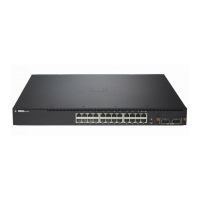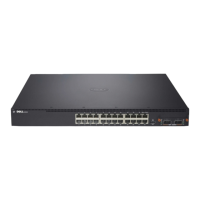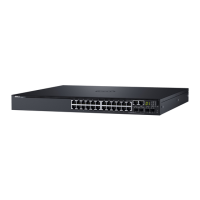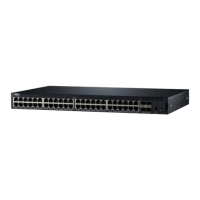Configuring Connectivity Fault Management 763
never intersect. The operator transparently passes frames from the customer
and provider, and the customer does not see the operator frames. Multiple
levels within a domain (say, operator) are supported for flexibility.
What Entities Make Up a Maintenance Domain?
Dot1ag defines three primary entities that make up the maintenance domain:
Maintenance End Points (MEPs), Maintenance Intermediate Points (MIPs),
and Maintenance Associations (MAs).
MEPs, and MIPs
MEPs and MIPs are software or sometimes hardware per-service entities
where CFM functionalities are present.
• MEPs define the boundary of a maintenance domain. They initiate and
respond to CFM messages. MEPs prevent the leaking of CFM messages
between domains (for example, among operators or between operators and
customers). Each MEP has a configurable unique identifier (MEPID) in a
maintenance domain.
MEPs periodically issue Continuity Check Messages (CCM) to discover
each other and issue SNMP traps to report connectivity losses or
malformed or incorrect CCMs.
A MEP can be defined as “down MEP” or an “up MEP”. A down MEPs
reside in a bridge that transmits CFM PDUs towards, and receives them
from, the direction of the LAN. An up MEP resides in a bridge that
transmits CFM PDUs towards, and receives them from, the direction of
the Bridge Relay Entity.
• MIPs are entities within a domain that enable the outer domain to achieve
end-to-end connectivity checks. MIPs passively receive CFM messages and
respond back to the originating MEP.
Figure 26-2 depicts two MEPs and the MIPs that connect them in a
maintenance domain.
NOTE: An entity at the boundary of maintenance domain that offers
connectivity and other services to systems outside the domain is referred to
as a Domain Service Access Point (DoSAP). A MEP is a type of DoSAP
whose services relate to connectivity fault management.
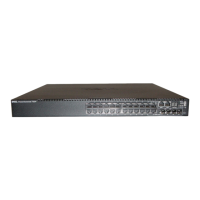
